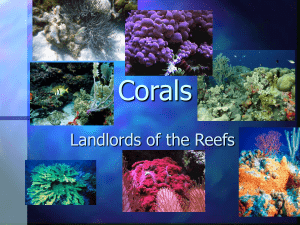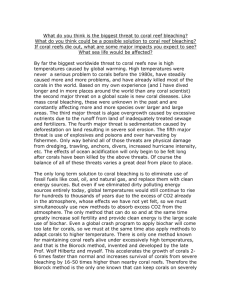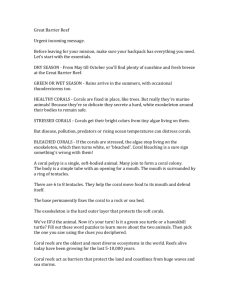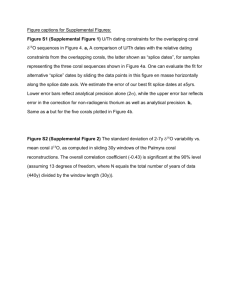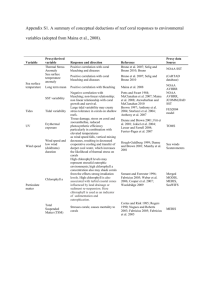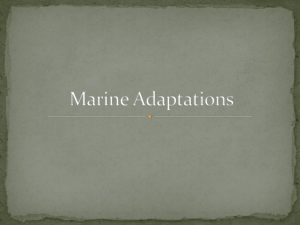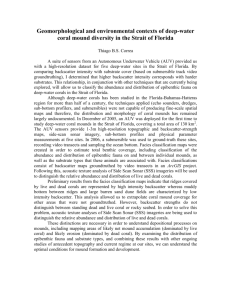coasts, worksheet 5, corals, answer - 2015-Sec3-Geog
advertisement
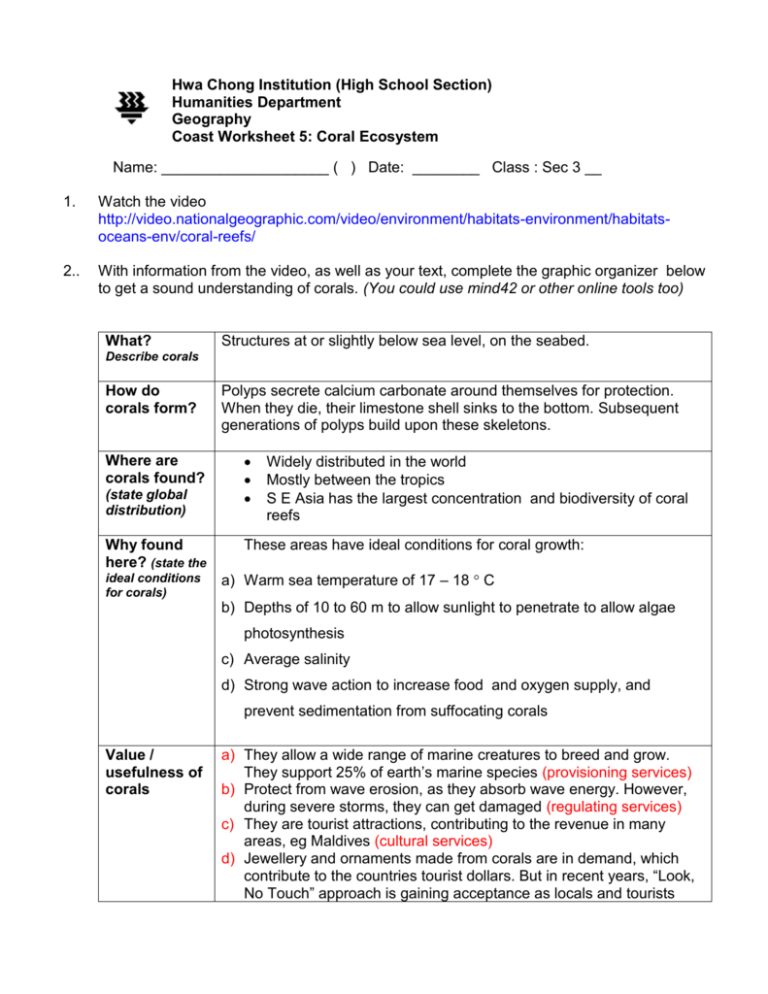
Hwa Chong Institution (High School Section) Humanities Department Geography Coast Worksheet 5: Coral Ecosystem Name: ____________________ ( ) Date: ________ Class : Sec 3 __ 1. Watch the video http://video.nationalgeographic.com/video/environment/habitats-environment/habitatsoceans-env/coral-reefs/ 2.. With information from the video, as well as your text, complete the graphic organizer below to get a sound understanding of corals. (You could use mind42 or other online tools too) What? Structures at or slightly below sea level, on the seabed. Describe corals How do corals form? Where are corals found? (state global distribution) Why found here? (state the ideal conditions for corals) Polyps secrete calcium carbonate around themselves for protection. When they die, their limestone shell sinks to the bottom. Subsequent generations of polyps build upon these skeletons. Widely distributed in the world Mostly between the tropics S E Asia has the largest concentration and biodiversity of coral reefs These areas have ideal conditions for coral growth: a) Warm sea temperature of 17 – 18 C b) Depths of 10 to 60 m to allow sunlight to penetrate to allow algae photosynthesis c) Average salinity d) Strong wave action to increase food and oxygen supply, and prevent sedimentation from suffocating corals Value / usefulness of corals a) They allow a wide range of marine creatures to breed and grow. They support 25% of earth’s marine species (provisioning services) b) Protect from wave erosion, as they absorb wave energy. However, during severe storms, they can get damaged (regulating services) c) They are tourist attractions, contributing to the revenue in many areas, eg Maldives (cultural services) d) Jewellery and ornaments made from corals are in demand, which contribute to the countries tourist dollars. But in recent years, “Look, No Touch” approach is gaining acceptance as locals and tourists understand the fragile nature of coral ecosytems (provisioning services) Pressures on coral ecosystems Natural: o Floods ‐ during floods in Australia, chemicals from farms, trace metals from flooded mines, top soil, rubbish, etc get washed into rivers and enter the sea ‐ these suffocate the coral reefs, and reduce salinity of the water, causing damage to the Great Barrier Reef Man-made: a) Overcollecting – overfishing in reefs and surrounding coastal areas. This affects the fragile balance of the food chain, eg at Philippines b) Fishing methods ‐ use of dynamite in Philippines and Indonesia destroy coral habitats ‐ spear fishing of selected fish upsets the food chain balance, eg in Belize Bonaire, the Neatherlands c) Tourism / recreational activities ‐ result in more waste being discharged into the sea, affecting coral growth ‐ building of harbours, use of more boats damages corals d) Pollution ‐ Chemicals from farms, factories and sewage causes sea water to turn murky, preventing sunlight from reaching coral polyps. This reduces their food production ability. e) Siltation ‐ As forests are cleared, more sediments are washed into the sea, causing water to turn murky, preventing sunlight from reaching coral polyps. f) Climate change. ‐ As global temperatures rise, sea temperatures increase too ‐ Sea levels rise too ‐ These changes are faster than the rate at which the ecosystems can adapt ‐ Result in coral bleaching – ie algae die, causing corals to turn white, eg at Seychelles 3. Should governments take steps to protect coral reefs? Give reasons to support your answer. _________________________________________________________________________ _________________________________________________________________________ _________________________________________________________________________ _________________________________________________________________________ _________________________________________________________________________ _________________________________________________________________________ _________________________________________________________________________ _________________________________________________________________________ _________________________________________________________________________ _________________________________________________________________________




